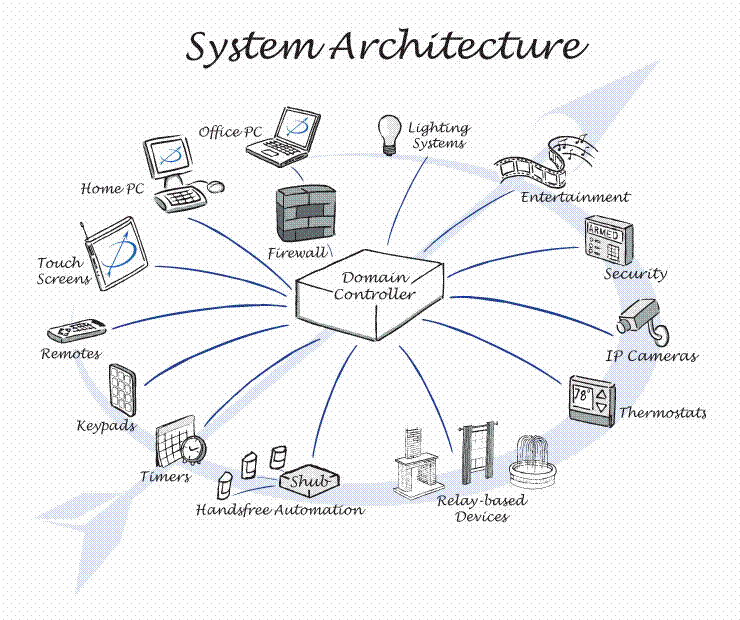
The Domain Controller sits at the center of your connected home and communicates with devices in both the new world of IP networking and the traditional world of IR, serial, and relay controlled devices and components, audio/video distribution equipment, and security, and energy management equipment.

Typically, homes will have an number of "islands of control". For example, the lighting system has switches and keypads to control lights, the entertainment systems has knobs, buttons, and numerous remote controls to control entertainment, the Heating Ventilation and Air Conditioning (HVAC) system has thermostats to control the temperature, and so forth. But each operates as an island of control in that you must use multiple interfaces to set up the home to way you like it.
The Domain Controller allows each of the islands of control to behave as they always have, but then allows you to control all of them from multiple types of interfaces such as PCs at the office or in the home, touch screen displays, handheld remote controls, keypads, timer events, and even handsfree automation. With the simple touch of a button - or just walking into the room - your home can be set up the way you like it.
Here’s a more technical explanation of the how it is all put together. The architecture is based on IP networking standards with the Domain Controller speaking IP over Ethernet and WiFi (802.11a/b) to IP-enabled devices such as home and office personal computers, laptops and tablet PCs, as well as some of the newer entertainment components. The Domain Controller also speaks RS-232, RS-485, IR, and RF to traditional home technology devices such as lighting control systems, whole house audio systems, and entertainment components. And it has relay outputs to control simple devices such as curtains, fireplaces, fountains, etc.